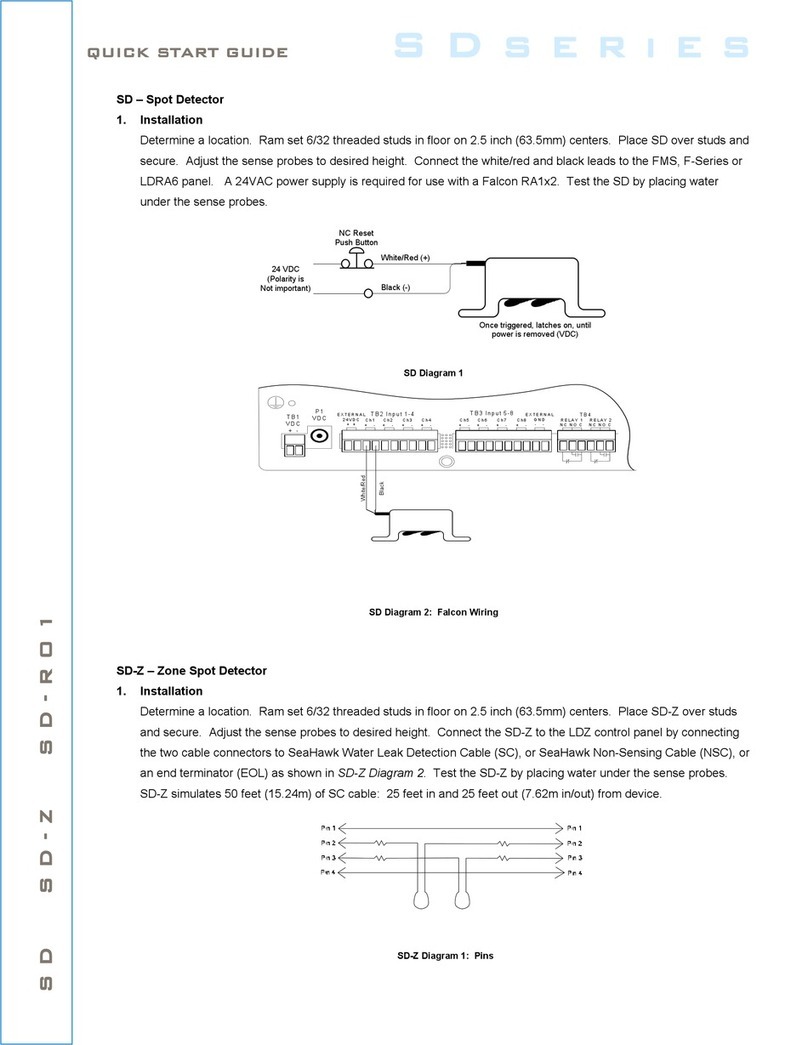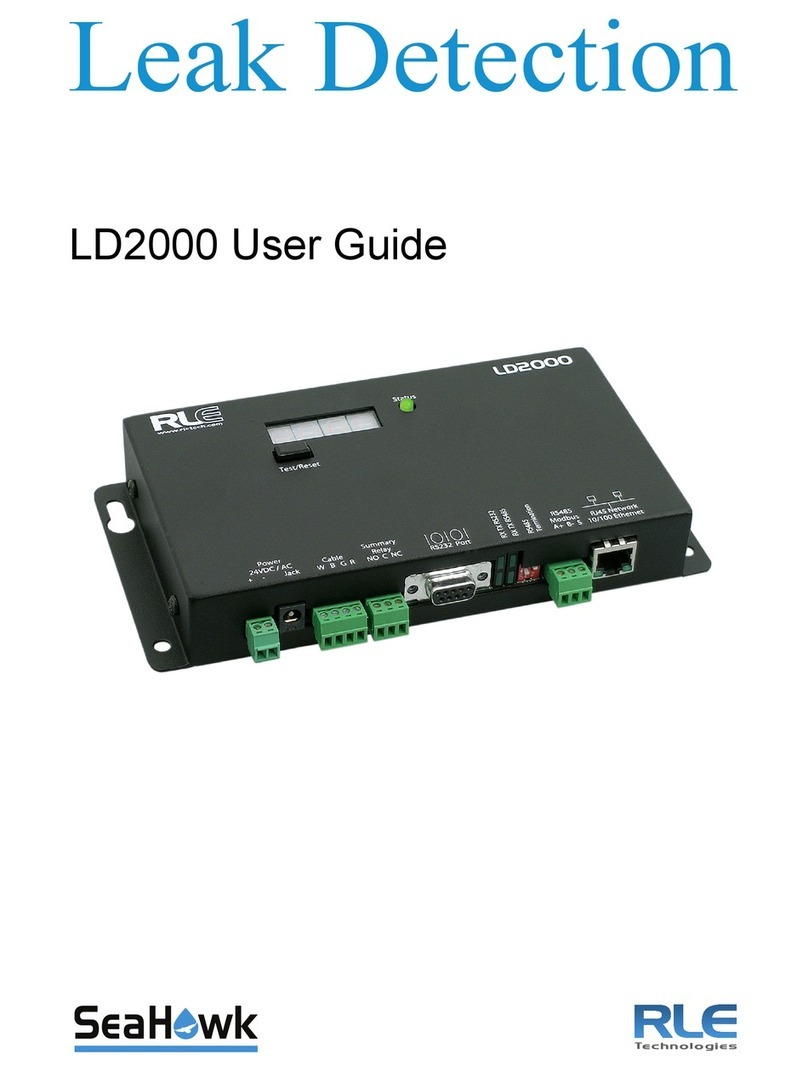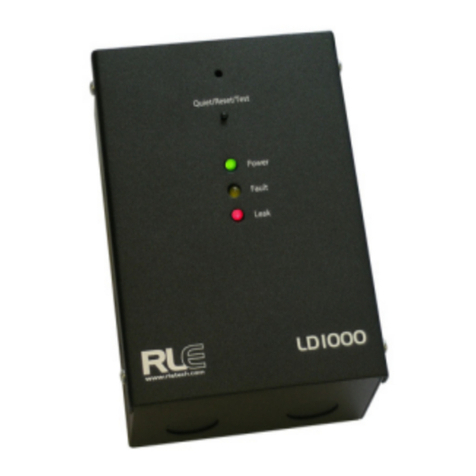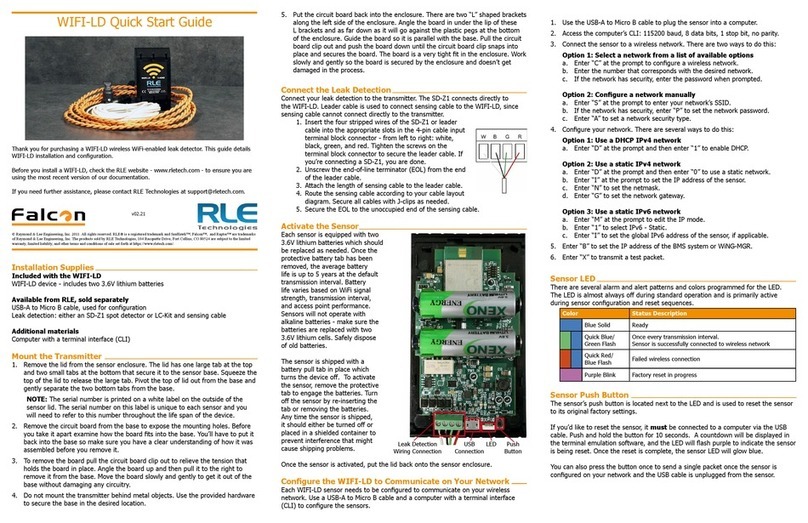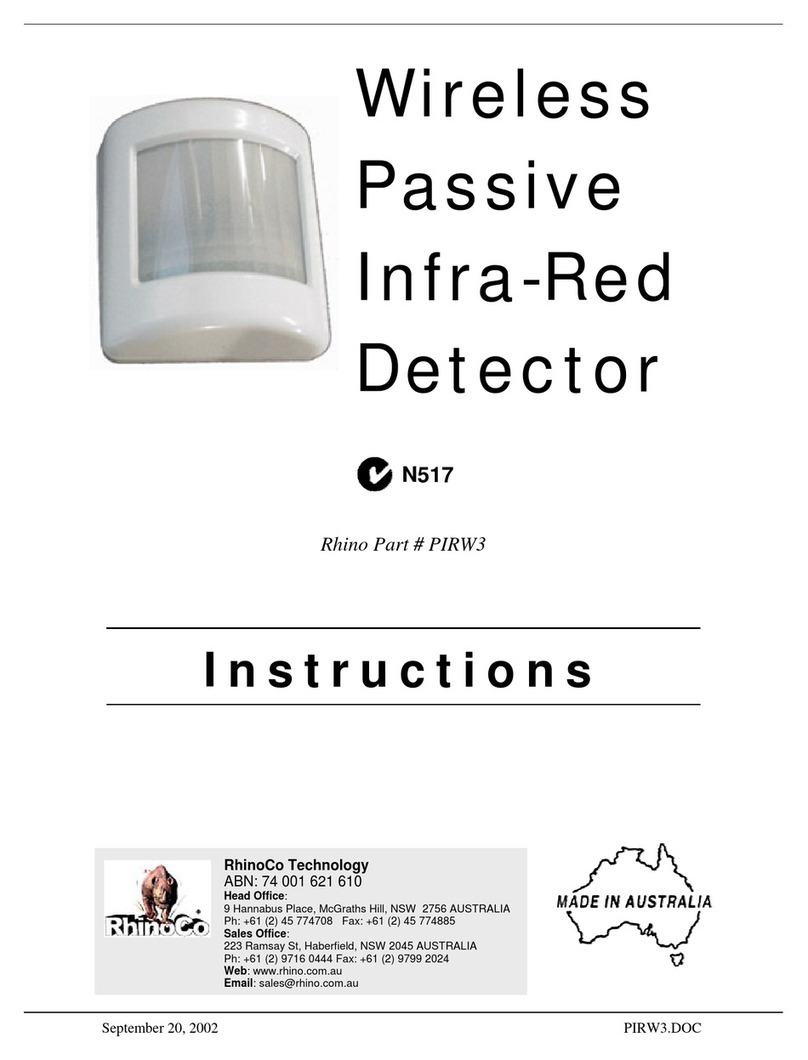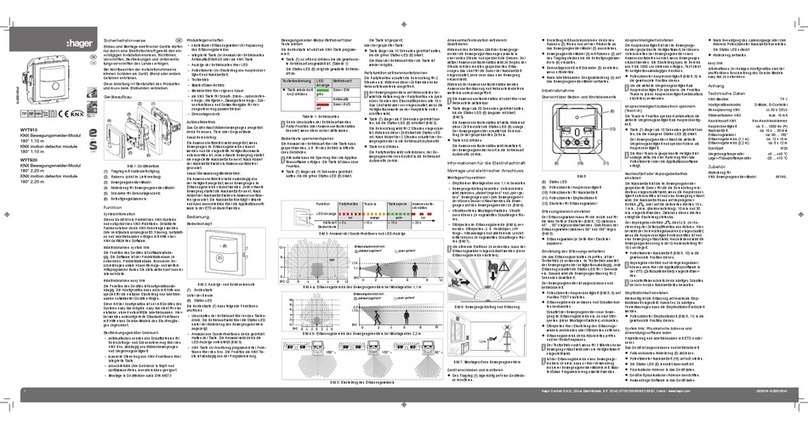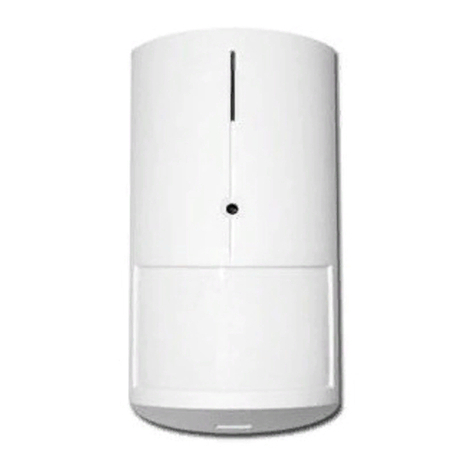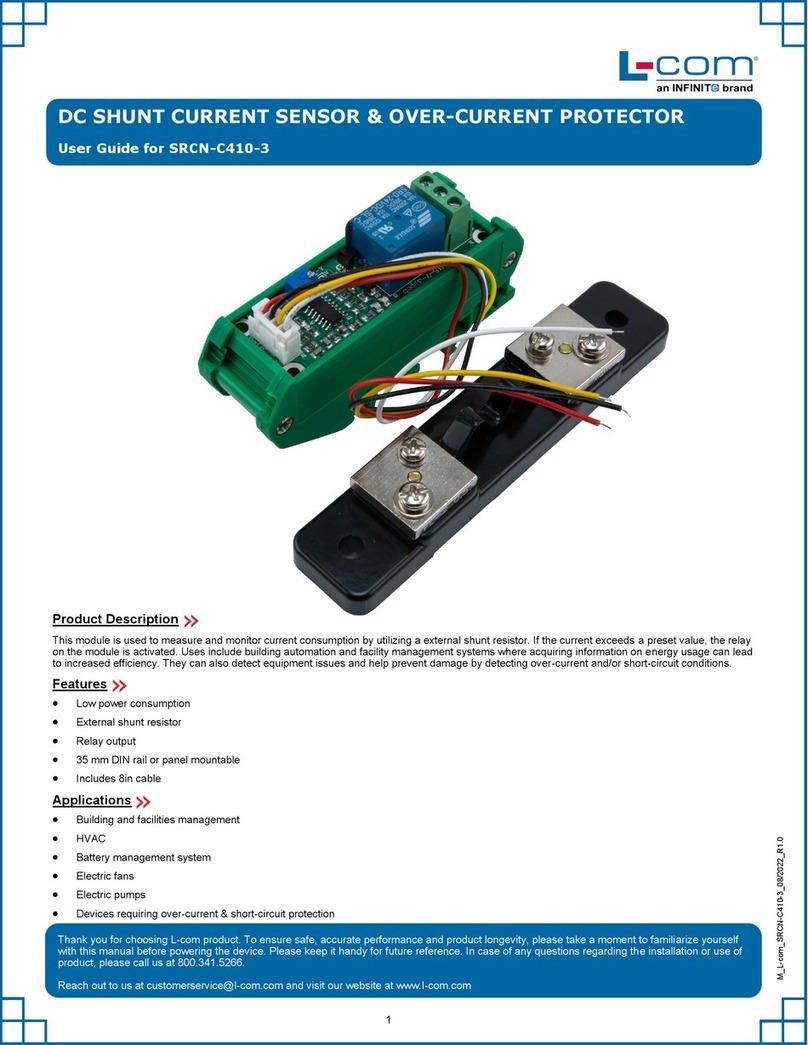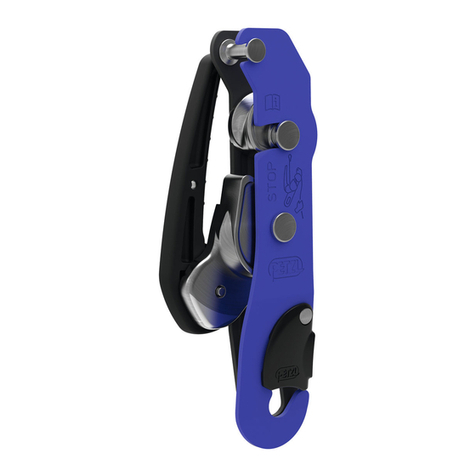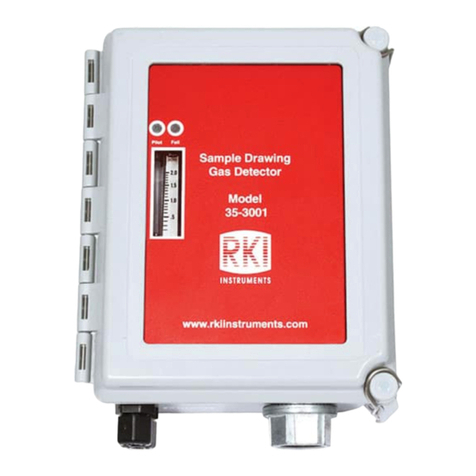RLE Technologies Falcon User manual

Battery
Each sensor is equipped with a 3.6V lithium
battery, which should be replaced as needed.
The average battery life is 2 years, once the
protective battery tab has been removed.
Schedule battery replacement to avoid a loss
of communications. Sensors will not operate
with an alkaline battery - make sure the
replacement is a 3.6V lithium cell.
The sensor is shipped with a battery pull
tab in place, which turns the device off.
Squeeze the shorter sides of the lid and
remove the sensor’s cover. To activate the
sensor, remove the protective tab to engage the battery. Turn off the sensor by
re-inserting the tab or removing the battery. Any time the sensor is shipped,
it should either be turned off or placed in a shielded container to prevent
interference that might cause shipping problems.
The Heartbeat LED ashes once every ten seconds, and lets a user know the
device is functional.
Installation Mode Switch
The sensor has an installation mode switch - a push
button located under the label in the center of the
enclosure lid. When pressed, the sensor transmits a
data packet with a special mark in its ID eld. This
indicates which sensor is in service or being installed.
The data is processed by the Wi-MGR’s Automatic
Discovery feature. For more information regarding
the Wi-MGR and wireless sensor integration, refer to
the Wi-MGR User Guide.
The push button can act as the sensor’s reset switch. It can be pushed after the
battery has been removed and reinstalled, or if the sensor acts erratically. Push
the button to revive the sensor and return it to normal operation.
Troubleshooting
The transmission range of a wireless sensor depends on the distance between
the sensor and the Wi-MGR, and the number of obstacles between the two. The
more obstructions between the devices, the weaker the signal becomes.
Do not install a wireless sensor inside a solid metal cabinet. This can interfere
with its transmission.
Battery Issues
When the protective tab is pulled to activate the battery, the metal terminal clip
on the PC board can bend slightly - not enough to see, but enough to cause
Serial Number
Magnetic Tape
Mount the Sensor
418MHz sensors can transmit 100 feet in open air with limited obstructions.
Wireless sensors should be mounted off the oor. While the electronics are
coated to provide a moisture barrier against condensation, the sensor is
not waterproof and submersion in water is not recommended. To prevent
transmission interference, make sure the side of the sensor with the white RLE
product label faces away from any metal surfaces.
Mount the sensor with 0.5 inch (1.27cm)
wide double-sided adhesive tape or adhesive-
backed magnetic tape. The magnetic tape
will not disturb the electronics, and works well
if the sensor is mounted on a metallic surface.
When placed correctly, the tape allows the
sensor’s label to remain visible. The serial
number on this label is unique to each sensor,
and you will need to refer to this number
throughout the life span of the sensor. If tape
is placed over the label, the paper label will
tear and the serial number will be unreadable.
Mounting holes can be found on the sides of the enclosure, if you wish to mount
it with screws, nails, or other fasteners.
© Raymond & Lae Engineering, Inc. 2011. All rights reserved. RLE® is a registered trademark and Seahawk™, Falcon™, and Raptor™ are
trademarks of Raymond & Lae Engineering, Inc. The products sold by Raymond & Lae Engineering, Inc. are subject to the limited warranty, limited
liability, and other terms and conditions of sale set forth at http://rletech.com/support/customer-agreements/
Wireless Sensor Quick Start Guide
Thank you for purchasing a Falcon wireless sensor, intended for use with the
Wi-MGR. This guide describes installation and troubleshooting methods for
wireless sensors available from RLE Technologies.
If you need further assistance, please contact RLE Technologies via our website -
rletech.com or call us at 800.518.1519.
v3.1
(11/2013)
Protective
Battery Tab
Heartbeat
LED
Push
Button

clips and the side of the battery. Remove the battery, gently squeeze the
clips in, and replace the battery.
• Check the battery’s voltage. If the battery is reading a low voltage (lower
than 3.4VDC), replace the battery with a 3.6V lithium AA battery.
“Ghost” Sensors
This issue may occur when wireless sensors are used in conjunction with an
Wi-MGR. When you installed your sensors, the automatic Sensor Discovery
feature on the Wi‑MGR was enabled. Initially everything congured correctly,
but when you check the Wi-MGR several days later, it reports far more sensors
than you have installed, and some of the reported data is very old.
When you congured your system, you left the Sensor Discovery feature on the
Wi-MGR enabled. The sensors sometimes transmit messages with garbled data
packets, and the Wi-MGR has interpreted the garbled data as new sensors. The
“new” sensors have been added to the interface. To avoid this problem, you must
disable the Sensor Discovery feature in the Wi‑MGR once the initial conguration
is complete and the Wi-MGR has discovered all the sensors.
To x this issue once it’s occurred:
1. Turn OFF the Sensor Discovery feature in the Wi-MGR.
2. Use the Wi-MGR interface to delete the “ghost” sensors. There are two
ways to delete sensors:
Option 1:
a. Click the Conguration link at the top of the page.
b. Click the System link on the left side of the page. You’ll see a box with a
Delete Sensor Range button on the right side of the page.
c. Enter the start and end sensor numbers for the range of sensors you’d like to
delete. If you’d like to delete just one sensor, enter that sensor’s number as
both the start and end points of the sensor range.
d. Click the Delete Sensor Range button.
Option 2:
a. Click the Sensors link at the top of the page. You’ll see a list of all the sensors
the Wi-MGR is monitoring.
b. Click on the number of the sensor you wish to delete. You’ll be taken to the
conguration page for that sensor.
c. Delete the information in the Sensor Type ID eld, the Description eld, and
the Serial Number eld. Click the Submit Changes button.
4. Repeat the process for each sensor you need to delete.
5. Once the “ghost” sensors are all deleted, there may be gaps in your list of
sensors - if you needed to delete the sensors in spots 4, 7, and 9, these
sensor numbers are now blank. You can renumber the existing sensors to
ll in these gaps.
6. To renumber your sensors, return to the Sensors page. Click the number
of the sensor you wish to renumber.
7. Scroll to the bottom of the page, and type the new number in the Move
sensor position to: box. Click the Submit Changes button. You’ll be
returned to the Sensors page, and the sensor will appear in its new
location in the list. Repeat this process for each sensor you wish to
renumber.
intermittent connection with the battery. If this happens, the sensor will either
operate erratically or not work at all. To x this problem:
1. Remove the battery.
2. Gently squeeze the battery clips toward each other, bending them slightly.
3. Insert the battery.
4. Replace the cover. Press the button in the center of the sensor to reset it.
The small red sticker near the positive terminal of the battery may release some
residue on either the battery terminal or the battery clips. This residue may
affect the function of the battery. To ensure this is not a problem:
1. Remove the battery.
2. Clean the end of the battery and the battery clips with an alcohol swab.
The rubbing alcohol should dissolve the adhesive and the residue should be
removed. Keep cleaning the clips and battery until you can no longer see or
feel any sticky residue.
3. Insert the battery.
4. Replace the cover. Press the button in the center of the sensor to reset it.
When you replace the battery, replace it with a 3.6V lithium battery, not a
standard alkaline AA cell. Also make sure you replace it with the terminals facing
the correct direction. The sensor will not function with an alkaline cell or if the
battery is inserted backwards.
While all RLE products have a 1 year standard warranty, this same warranty does
not apply to the battery within the wireless sensor. RLE warranties the batteries
in wireless sensors for 90 days from the date of purchase.
Sensors Are Not Automatically Discovered by the Wi-MGR
If an installed sensor is not detected by the Wi-MGR, it is either too far away
from the Wi-MGR, or there is an obstruction in its path. To determine the source
of the problem, remove the sensor from its installed location and place it near
the Wi‑MGR. If it’s then discovered by the Wi‑MGR:
• It’s desired location may be too far away. Move the sensor away from the
Wi-MGR in small increments. This will help you determine the distance
threshold of the sensor.
• An obstruction is blocking the signal. Either move the sensor, or install a
repeater to relay the signal.
• If it’s a single sensor application, installing a 900MHz sensor may be more
cost-effective than a repeater.
If the sensor is still not discovered by the Wi‑MGR:
• Verify the sensor’s serial number. Make sure you’re looking for the correct
sensor at that position.
• Remove the sensor’s cover and make sure the battery pull tab has been
completely removed.
• Check to see that the heartbeat LED is blinking, once every 10 seconds.
You’ll nd the red LED in the bottom right corner of the circuit board.
• If the red LED is not blinking, ensure there is not a gap between the battery
Other RLE Technologies Security Sensor manuals
Popular Security Sensor manuals by other brands
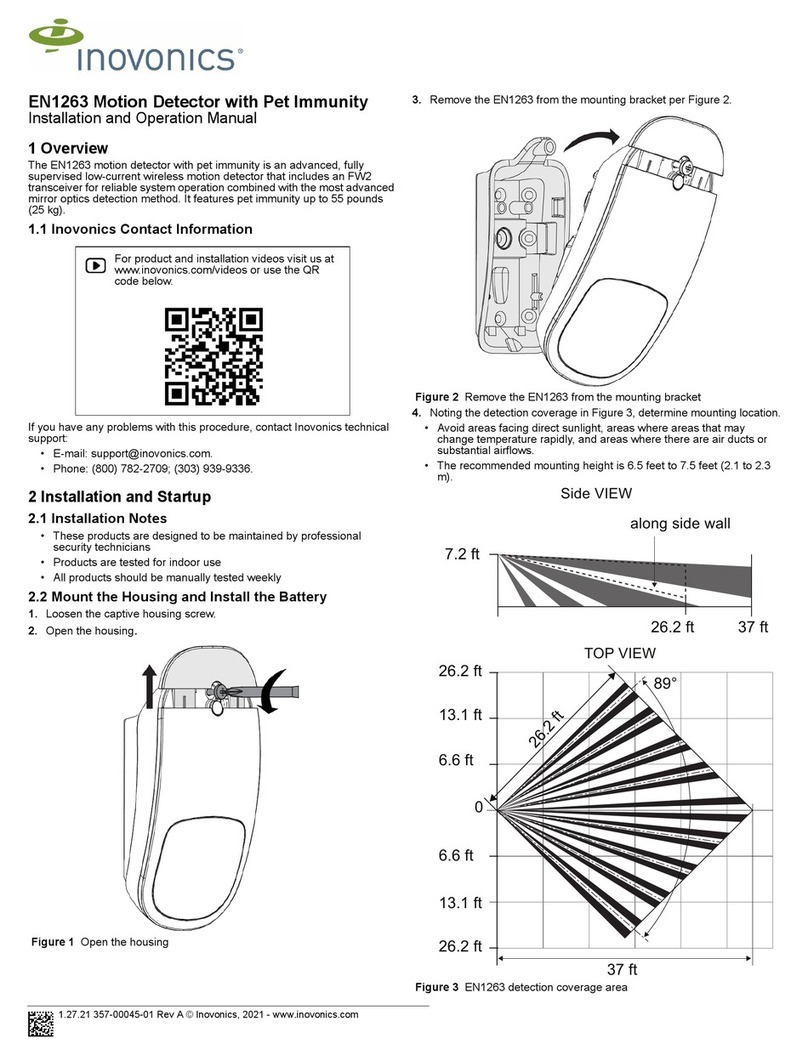
Inovonics
Inovonics EN1263 Installation and operation manual
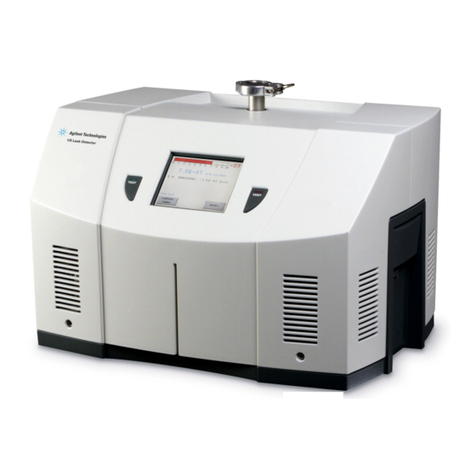
Agilent Technologies
Agilent Technologies VS Series Operation manual
Inficon
Inficon Sensistor ISH2000 HySpeed operating instructions
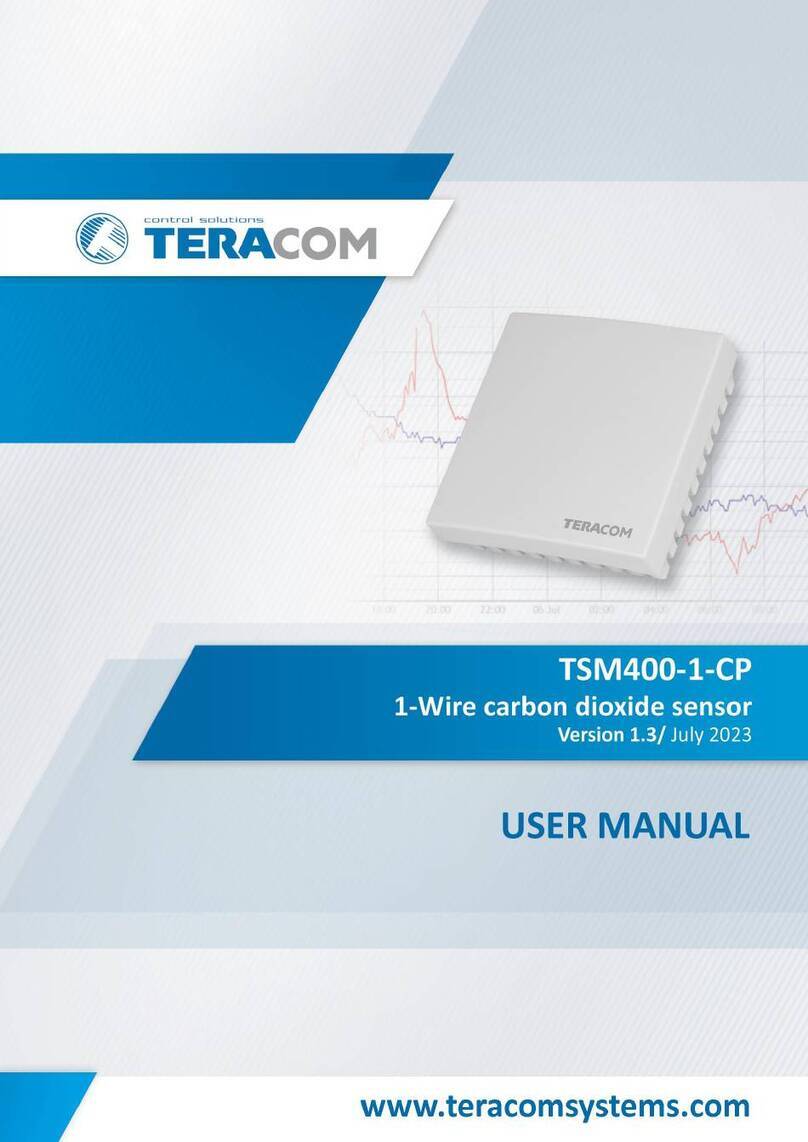
Teracom
Teracom TSM400-1-CP user manual
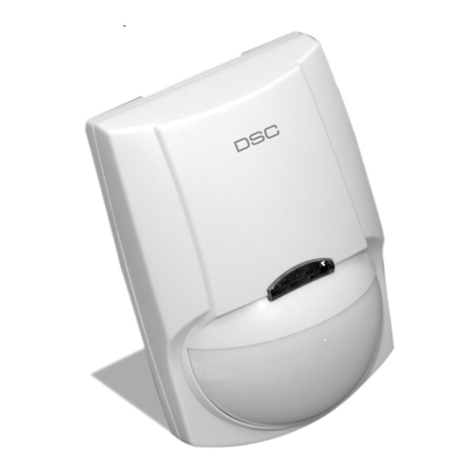
DSC
DSC LC-100 PI installation manual

Rielta
Rielta Ladoga MK-RK installation guide
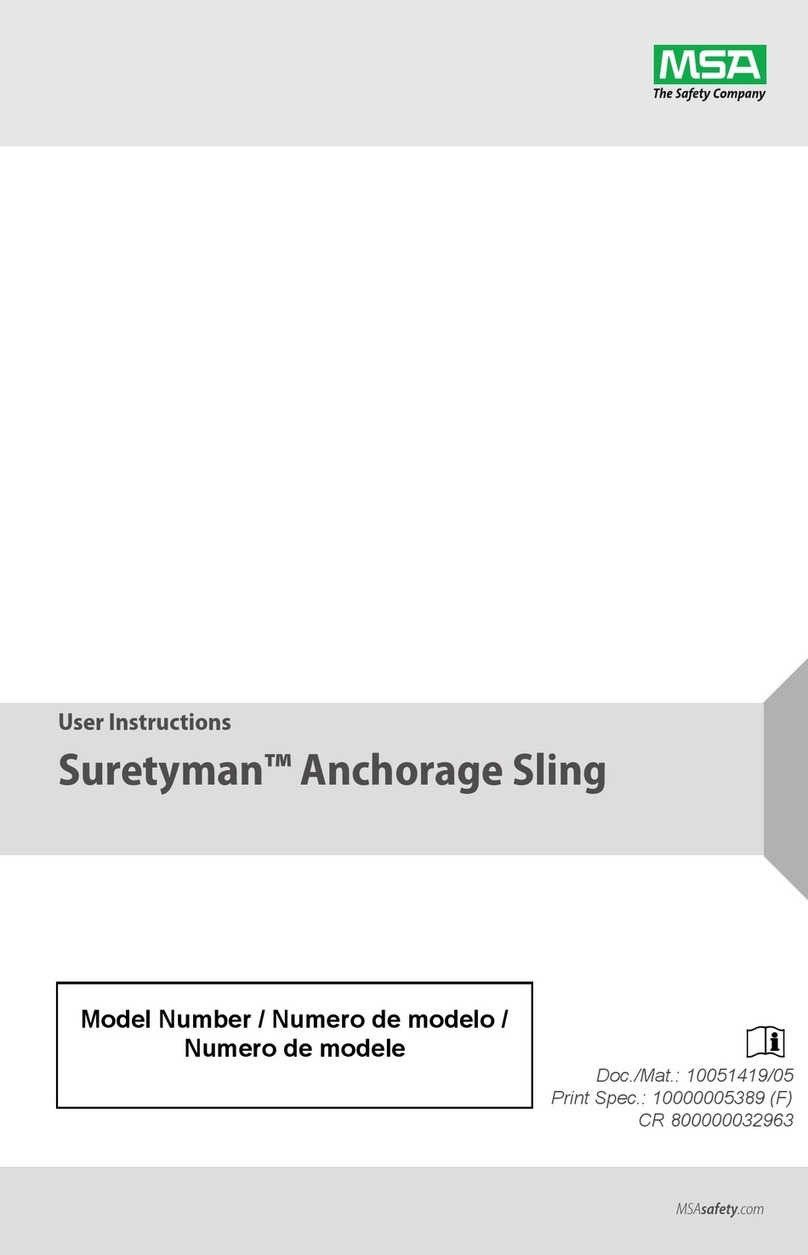
MSA
MSA Suretyman Anchorage Sling User instructions
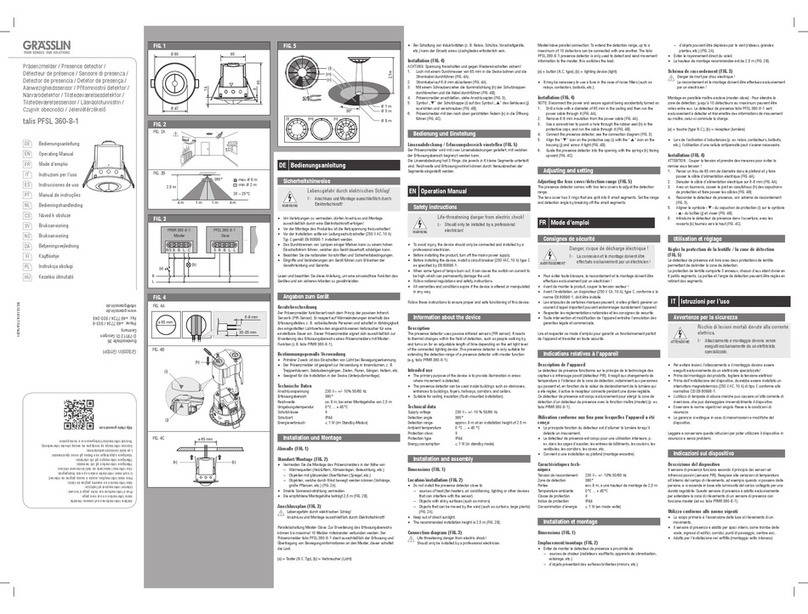
Grasslin
Grasslin talis PFSL 360-8-1 operating manual

Omron
Omron E8M - manual
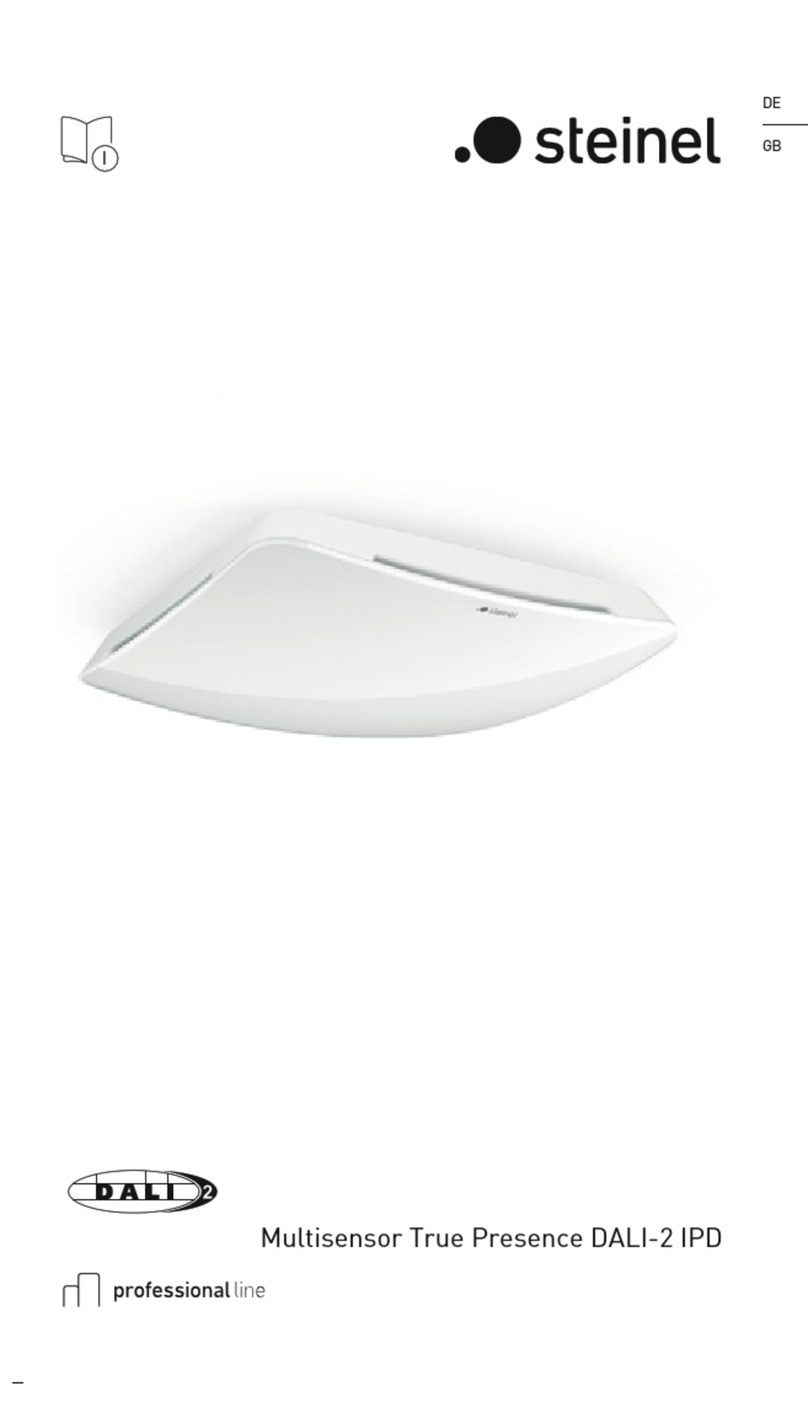
STEINEL
STEINEL Multisensor True Presence DALI-2 IPD manual
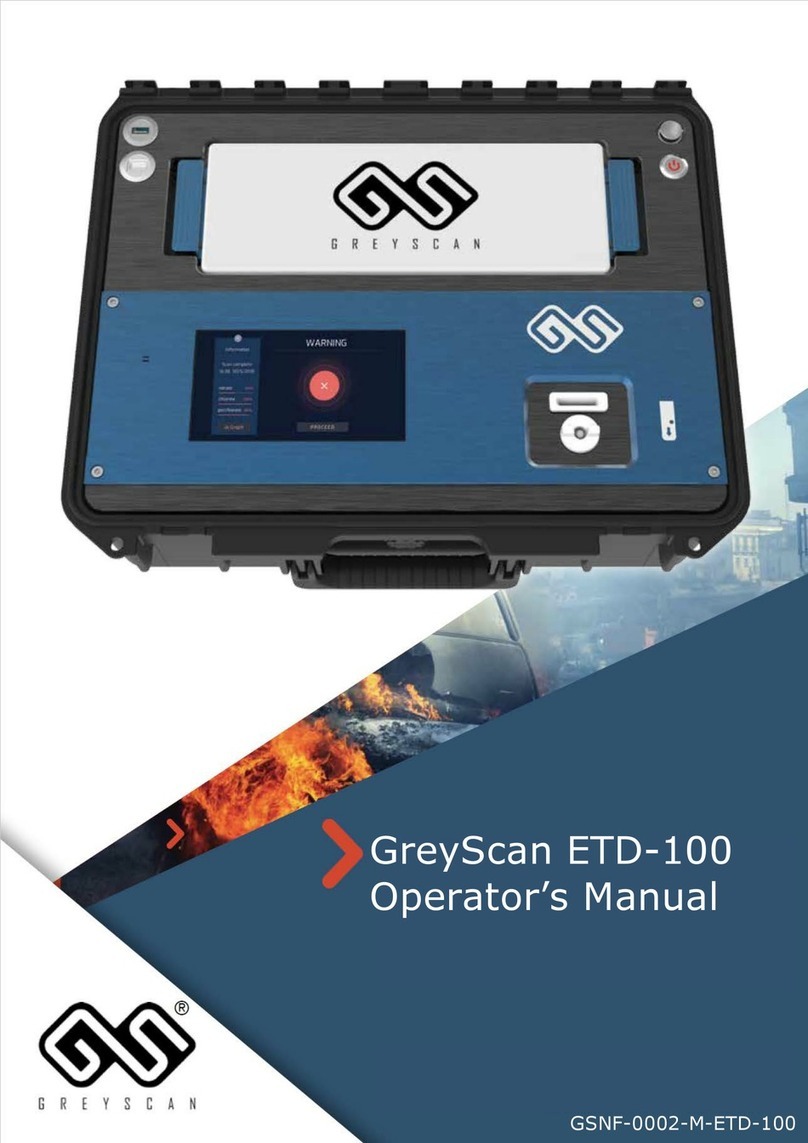
GreyScan
GreyScan ETD-100 Operator's manual
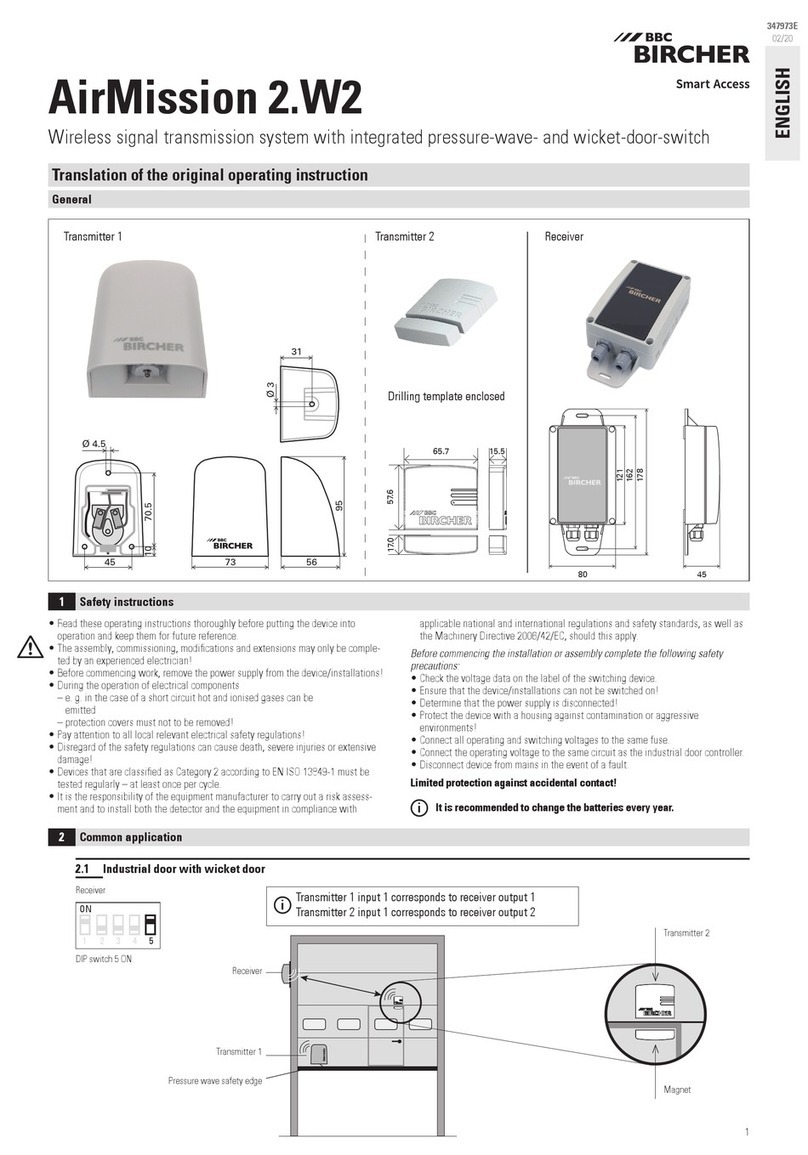
BBC Bircher
BBC Bircher AirMission 2.W2 Translation of the original operating instruction
